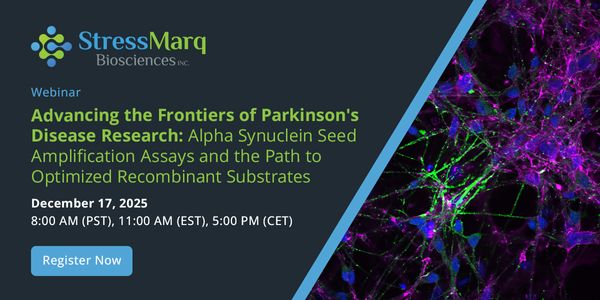Associate Professor in Clinical Pharmacy Practice, University of Nottingham, United Kingdom
BIOGRAPHY
Speakers
Abstract
Chair: Roger Knaggs, United Kingdom
EBM and effect sizes: Be realistic!
Dominic Aldington, United Kingdom
Dominic Aldington, United Kingdom
This presentation is expected to be aligned to the European Pain Federation Curriculum. When searching this document, the word “evidence” appears on more than 30 pages at least once. However, we only have 10 minutes in which to discuss Evidence Based Medicine, a topic that some people are able to spend an entire career on. The talk will start with defining Evidence Based Medicine. It will then go on to describe the Cochrane database and some of the assets available there for pain clinicians. We will then remind ourselves of the current definition of pain before discussing how to measure pain and define what is a successful intervention. The topics of bias and trial size will be briefly covered, together with the Numbers Needed to Treat and the issues around average results. The aim of this talk will not be to provide everything one needs to know about evidence based medicine but will instead cover a few of the simple pitfalls one must avoid.
Drugs: The weird and wonderful
Roger Knaggs, United Kingdom
Roger Knaggs, United Kingdom
This presentation will provide a short overview of drug classes which are often omitted from clinical guidelines often due to lack of robust evidence for efficacy. However, when used within the specialist setting, they might be useful in carefully selected patients. Results from multiple trials are often inconclusive because of studies with poor levels of evidence, paucity of trials and small samples. We will review their pharmacological effects and possible analgesic benefit, together with conditions where potential benefit has been proposed.
Clonidine, an alpha-2 adrenergic receptor agonist, has a more established role in acute perioperative pain management, however there is emerging evidence that it may be beneficial for chronic pain conditions as well. Administration by the epidural, intrathecal and local/topical routes may be effective in chronic pain conditions such as complex regional pain syndrome, chronic low back pain, and neuropathic pain not responding to conventional management.
Skeletal muscle relaxants are a diverse group of drugs that can be classified into two main categories: antispasticity and antispasmodic medicines. Antispasticity drugs, work on the spinal cord or directly on the skeletal muscles to improve muscle hypertonicity and involuntary spasms. On the other hand, antispasmodics decrease muscle spasm through alterations of CNS conduction.
Several atypical antipsychotics have been evaluated for use in chronic pain. although most studies have used olanzapine and quetiapine. There is preliminary and consistent efficacy for olanzapine in fibromyalgia and headache/migraine, Other atypical antipsychotics have failed to demonstrate efficacy in pain syndromes to date and/or lack robust study design.
Ketamine is a non-competitive N-methyl-d-aspartate (NMDA) receptor antagonist There is only very limited evidence for the use of ketamine in chronic noncancer pain and concerns and a lack of safety data concerning long-term or repeated treatment. Importantly, there is no strong evidence to support the current practice of treating chronic noncancer pain with repeated intravenous infusions. Memantine has been suggested to improve pain and cognition in fibromyalgia with few side effects.
Biologicals in chronic pain management
David Walsh, United Kingdom
David Walsh, United Kingdom
Greater understanding of molecular mechanisms of pain is leading to specific treatments targeted to individual molecules. The high specificity of antibodies, and experience of their safe administration, provide opportunities for novel therapeutic development. Antibodies that block the action of nerve growth factor (NGF) are efficacious in the relief of osteoarthritis pain. Antibodies blocking Calcitonin Gene Related Peptide pathways reduce migraine frequency. Safe use of biologic agents in clinical practice depends upon understanding other actions of the targeted molecules, and possible protective roles of pain. Expense of newly developed drugs may limit their general availability. Clinical trials of biologic agents give definitive evidence to confirm mechanisms of human pain, and differences in pain mechanisms between diseases.
Topical analgesic pharmacotherapy
Bart Morlion, Belgium
Bart Morlion, Belgium
Topical analgesics make part of multimodal pain management. A topical analgesic medication is one applied to body surfaces such as skin or mucous membranes to treat painful ailments. These topical agents can be mixed in different vehicles such as ointments, creams, lotions, gels, patches, aerosols. The skin can be considered as a neuro-immuno-cutaneous system containing several cell types involved in peripheral nociceptive processing: nociceptors, small fibres, keratinocytes, glia cells and immune cells. Topicals have an excellent risk/benefit ratio, show good safety and tolerability and are a strategy to reduce adverse effects of systemic pharmacotherapy, including opioids and non-opioids, such as NSAIDs. Disadvantages of the use of topicals can be local skin irritation, rashes and dermatitis. On the other hand, topicals are less suitable for larger pain areas and there can be large variations in the diffusion through the stratum corneum. A plethora of agents, among which local anaesthetics, NSAIDs, amitriptyline and anticonvulsants, are used clinically, many of which lacking robust scientific data for formulating clinical practice recommendations. A Cochrane review found evidence for the use of topical NSAIDs in acute musculoskeletal pain, for the use of lidocaine 5% and capsaicin 8% in localized neuropathic pain and topical NSAIDs and capsaicin in (knee) OA. Nevertheless, the authors conclude that there may be circumstances when an experienced clinician may still choose to use them, because the evidence does not exclude beneficial effects in a small percentage of people.
Q&A
You May Also Like
Loading Comments...









